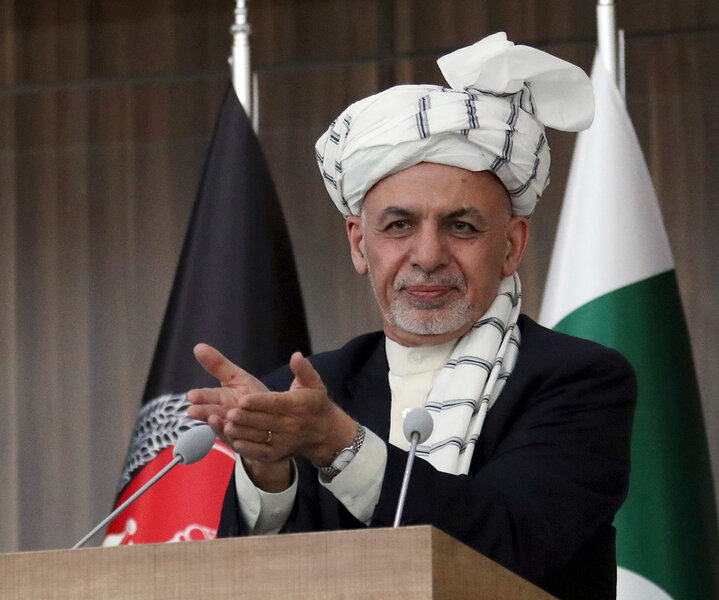Clues of peace in Afghanistan
After decades of conflict and costly foreign intervention, Afghanistan has a new chance for peace. Both the government and the Taliban have declared unilateral cease-fires to mark the end of the Islamic holy month of Ramadan. The temporary halt in fighting is only for three days, June 15-18. Yet if it holds, it will be the most extensive halt to offensive operations since the United States invaded the country in 2001 in response to the 9/11 bombings by Al Qaeda.
Any path to peace remains difficult. But even a brief cease-fire may signal momentum toward a negotiated solution. Crucial to any prospects for peace will be a dialogue between the militant Islamic Taliban and the elected president, Ashraf Ghani, and his team about issues of governance and power sharing.
Fighting in Afghanistan has been intense over the past year, but the logic of a negotiated solution has gained support inside and outside the country. Evidence is growing that the Afghan people strongly desire an end to the fighting. A small group of “peace marchers,” for example, is walking 300 miles from Kandahar to Kabul – while respecting the Ramadan practices of daytime fasting – in order to signal their “thirst for peace,” as one participant told the press. And shortly before the government’s cease-fire announcement, a group of Afghan clerics called for a cease-fire and talks.
If there is a real opening in these events, it will remain fragile and needs to be encouraged. Both sides put caveats on their cease-fires. The government did not include a cease-fire with the more radical Islamic State or Al Qaeda groups operating in the country. The Taliban said its cease-fire is only with the “domestic opposition” and not “foreign occupiers” (US and NATO forces). Most observers expect the Taliban’s “fighting season” to continue after the three days.
Yet the fact that both parties made this gesture is significant as it signals they each realize the only way out is a political settlement. For its part, the Trump administration set a goal last year of a negotiated solution. To get there, it is working to strengthen the Afghan military and the government’s services to the people, as well as increase pressure on Pakistan to cut its support for the Taliban.
The US moves have given a boost to the Afghan government, notably to the reformers in its ranks. Indeed, younger Afghans educated since 2001, including women, are taking leading roles in Kabul.
While the government still rules over most of the population, the Taliban controls or threatens large swaths of the country. Human rights organizations underscore the rising toll of fighting on civilians. Other observers argue more positively that recent events have reinforced a perception that a military victory is not possible for either side, a view that has strengthened public sentiment to find a way to peace.
Both the Taliban and President Ghani may have sensed this shift. Indeed, one of the peace marchers told reporters that a group of Taliban fighters approached them at one point to offer their support for the march and for ending the fighting.
The next big threshold is to bring the parties together. The Taliban insists they will only negotiate with the US and only about withdrawing US forces. The Afghan government and its foreign allies say talks must be Afghans talking directly to Afghans and that a settlement must preserve important advances, such as rights embodied in the Constitution. A new generation of Afghans is now used to a more open and progressive environment. Some observers argue that elements of the Taliban also have moderated their views on a future Afghan society.
The mental blocks against peace in Afghanistan may be crumbling. If these latest signs of warming prove real, the next step may be talks through informal channels or perhaps using a third-party mediator. A war-weary Afghanistan deserves a way to a better future.





